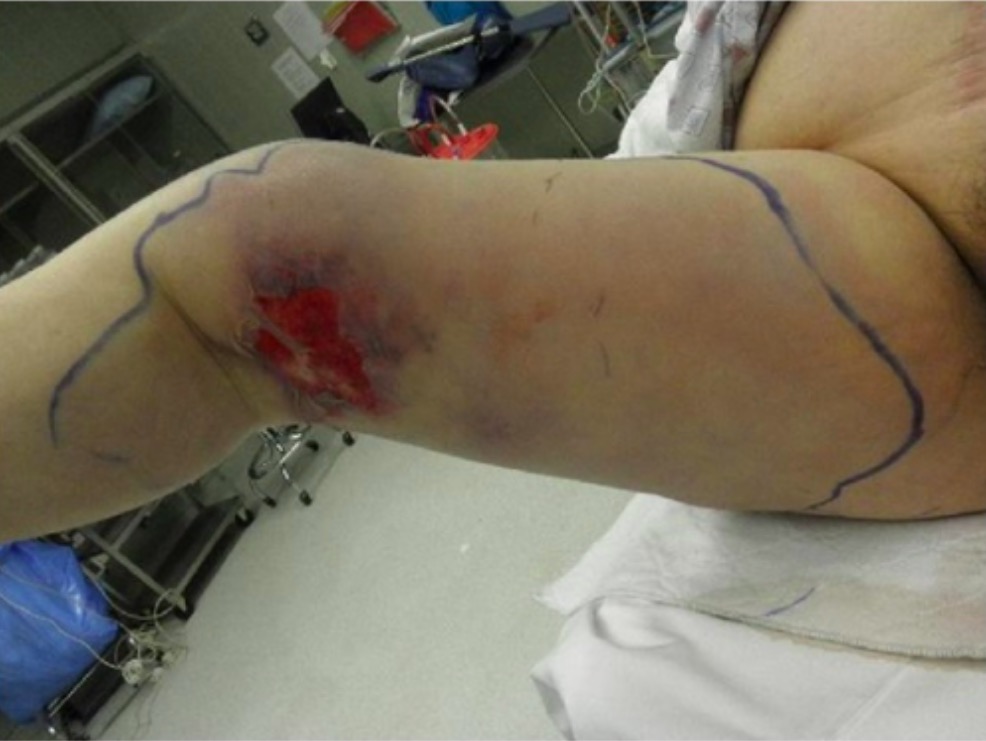Playlist
Show Playlist
Hide Playlist
Toxic Shock Syndrome and Necrotizing Fasciitis (Flesh-Eating Disease)
-
Slides Dermatology Infectious Disorders.pdf
-
Reference List Pathology.pdf
-
Download Lecture Overview
00:01 Here, we'll take a look at toxic shock syndrome of staphylococcal type. 00:05 Your patient will be suffering from fever, hypotension, erythema, following staphylococcal infection due to a superantigen produced by the bacteria. 00:15 Superantigen produced by the bacteria. 00:19 Superantigens are antigens that cause non-specific activation of T-cells, leading to massive cytokine release. 00:27 Toxic shock syndrome toxin or TSST-1, is a well known superantigen. 00:33 Most commonly seen in women using tampons. Do no forget this. 00:39 You see this -- I wanna say quite commonly, but often enough in which the tampon has been inserted and has been lying around for too long, and unfortunately, is introducing a staph infection. And no joke. 00:56 The characteristic sunburn rash of toxic shock syndrome appears in the early stages of the disease, and is commonly located on the palms and soles. 01:07 Desquamation occurs after 10-21 days. 01:10 Management, clindamycin for the toxin production, vancomycin or nafcillin to kill the staph. Make sure that you know this is great detail. 01:21 The topic here is necrotizing fasciitis. Now, necrotizing fasciitis, what is it? It's a necrotizing infection of the deep subcutaneous tissue. Look at this. It is not pretty. 01:37 Type I, mixed aerobic, anaerobic bacteria, most common in diabetics, and Type II, think of MRSA, a group of streptococci, most common in otherwise healthy patients. 01:50 Two types of fasciitis, think of the fascia, the deep portion of your subcutaneous, that then undergoes infection. Type I, mixed, Type II, group A streptococci. 02:05 Management, surgical debridement of involved fascia. 02:09 Antibiotics for Type I, suspected, would then be ampicillin-sulbactam, Type II, clindamycin, penicillin-G, or vancomycin if it's MRSA.
About the Lecture
The lecture Toxic Shock Syndrome and Necrotizing Fasciitis (Flesh-Eating Disease) by Carlo Raj, MD is from the course Infectious Skin Diseases. It contains the following chapters:
- Toxic Shock Syndrome
- Necrotizing Fasciitis
Included Quiz Questions
What organism causes toxic shock syndrome?
- Staphylococcus aureus
- Viridans streptococci
- Staphylococcus epidermidis
- Group C streptococci
- Streptococcus pneumoniae
Who is most likely to develop type I necrotizing fasciitis?
- Immunocompromised patients
- People with Down syndrome
- Postmenopausal women
- Elderly patients
- Premature newborns
Customer reviews
5,0 of 5 stars
| 5 Stars |
|
2 |
| 4 Stars |
|
0 |
| 3 Stars |
|
0 |
| 2 Stars |
|
0 |
| 1 Star |
|
0 |
great explanation Few people have a talent in teaching. i think Dr Raj is one of them thank you so much
Great overview. Wish that dermatology covered more topics, though. I enjoyed this overall. I like the transcript section. It allows me to review the material and read the speakers words verbatim. This is wonderful for all types of learning.





